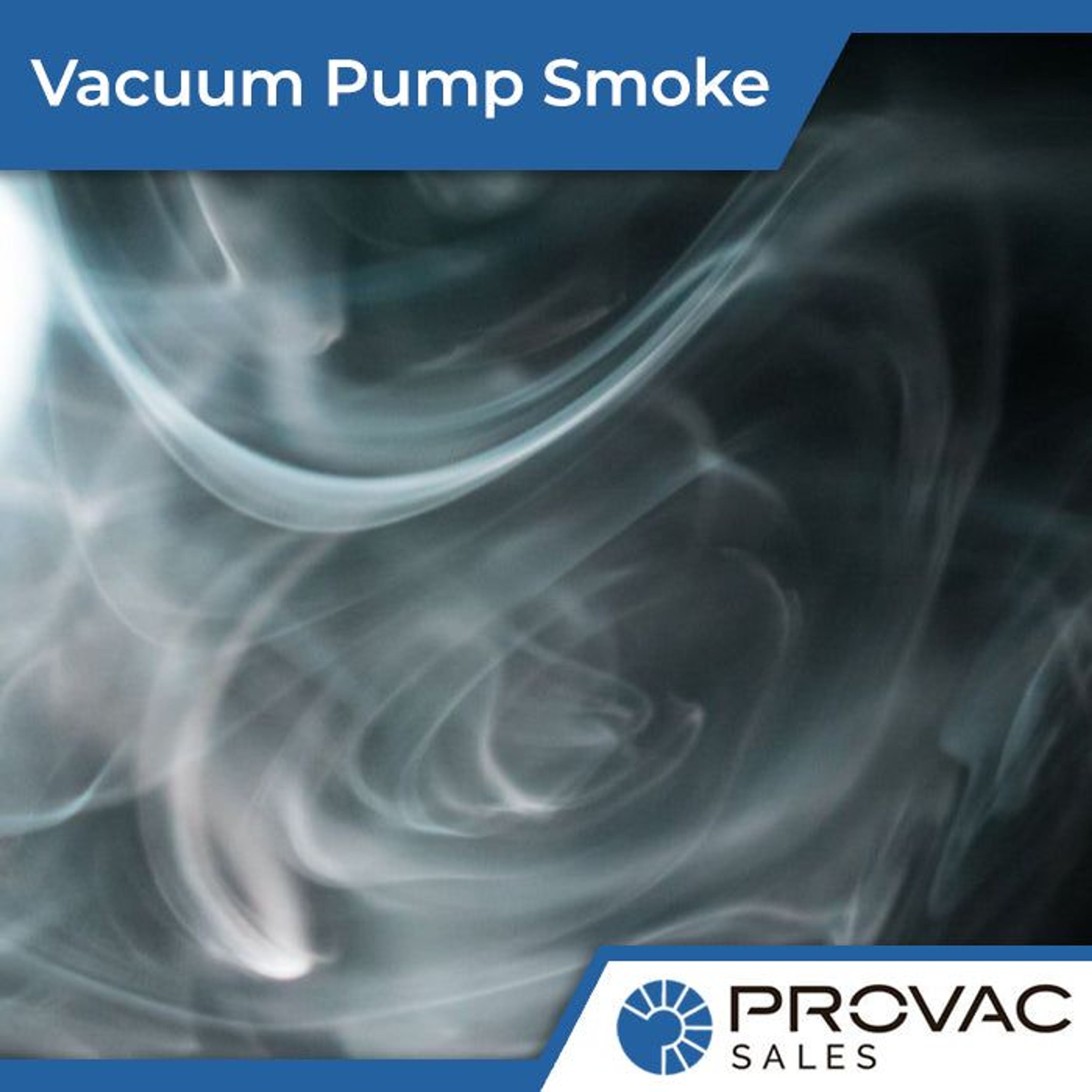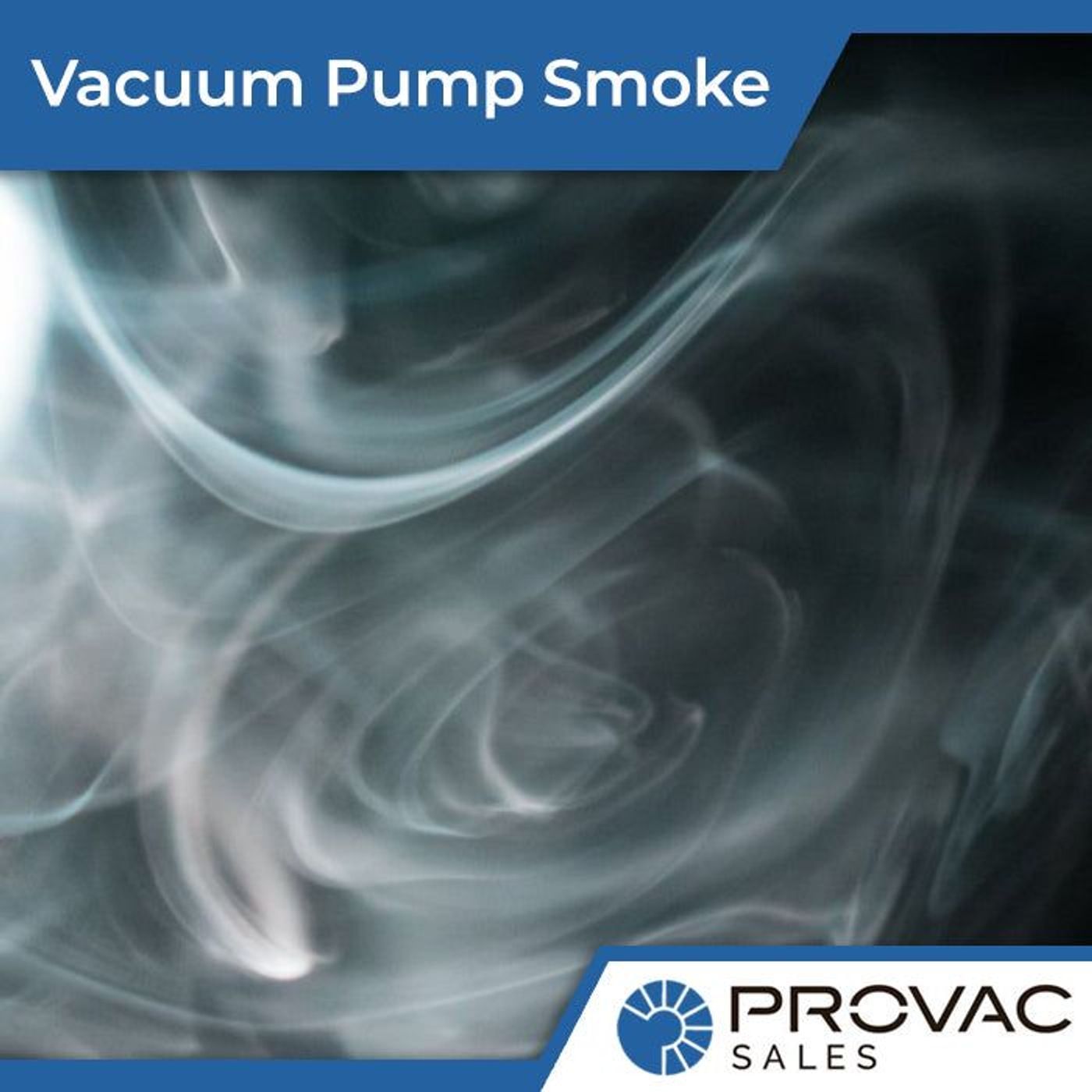Is your vacuum pump smoking and you are worried that it is malfunctioning? Are you concerned about possible damages? Well, you may not have a major issue. In many cases, the smoke you see is actually mechanical pump oil vapor. Many people tend to think that whenever there is smoke emitting from the pump, it means there is something wrong with the machine. But, oil vapor or oil mist is a natural by-product of creating vacuum in an oil sealed mechanical pump. There is nothing to worry when you notice this kind of vapor because the pump emits it while pumping on a specific chamber from the atmosphere.
Why does it happen?
A vacuum pump has several essential parts, and the oil reservoir is one of them. The air pumped into the chamber moves through the oil reservoir. When it comes in contact with the oil, some of it is vaporized, especially when there is excess air moving through the reservoir. The pump will try to provide enough pressure into the chamber. You will notice more vapor/smoke when there is more pressure. However, as the pressure reduces, the oil vapor also reduces dramatically. In other words, as a volume of air enters the vacuum pump, more oil mist is created. As the volume decreases, you will see less mist. Smoke or mist out of your exhaust indicates there is a volume traveling through the pump; if you see a constant flow of mist out of the exhaust, and you think you have exhausted your vessel or chamber that you are pumping down, it may indicate there is a leak somewhere into the pump, or that the gas ballast is in the open position. Many manufacturers recommend installing an oil mist eliminator on the exhaust to coalesce the oil mist. Most oil mist eliminators have replaceable filters which need to be changed when they become saturated with oil.
Occasional oil discharge
Some designs of vacuum pumps contain an internal oil mist separator inside the exhaust cavity. It usually remains closed with a cover plate. This part is made of a fibrous material that gets wet when oil passes through it. The more the oil passes through this part, the more chances of the smoke emitting when the pump is operating in full throttle. When the exhaust mist separator becomes saturated it needs to be replaced. Running the vacuum pump with mist separator that is overly saturated can create a plugging-effect on the exhaust, which creates back-pressure throughout the vacuum pump. Backpressure can lead to leakage in the seals as they are forced backwards to their design, and in some cases can even damage or break the seals.
One of the primary reasons why the mist may appear while the pump is switched on is due to a noisy pump.
- Noisy pumps - Sometimes the smoke coming from the pump may be due to some genuine fault in the machine. If your new pump emits smoke, you should understand that it is the oil vapor that you are mistaking it for. However, if the pump is old and already worked for several years, the smoke may indicate there is an internal leak or that the pump is not functioning properly. You will also notice the pump making abnormal noises, and that the ultimate vacuum level is slipping. This can happen when some foreign objects get trapped inside the pump. It is a very severe problem, and you might notice heavy smoke from the oil reservoir. Apart from the smoke, there will also be erratic noises and vibrations. Many users overload the pump with water. This can also make the pump noisy, and eventually, it will emit smoke in addition to hydraulic and groaning sounds. Overloading the pump with water will reduce its efficiency and also increase the risk of malfunctioning. If you suspect there is debris or contamination that has gotten into the vacuum pump, try changing the oil and see if you can improve performance with a clean batch of oil.
Technicians think that it is not uncommon for oil-filled pumps to emit a mist when air is moving through the pump. Whenever the full vacuum pulls down the chamber, you will notice that the smoke disappears. However, if you continue seeing the mist after the chamber has been evacuated, it may be a sign that there is a leak somewhere in the system. You should contact an expert to inspect the pump thoroughly because if this problem persists, it can damage the unit altogether. Running a vacuum pump on a leak for an extended period of time will make the pump run hotter, and the increase in oil mist production will cause a dip in the oil level of the pump. Eventually, the pump will run out of oil; running the pump without oil will cause damage to the internals.
Understanding normal mist levels during operation can help technicians notice when something is unusual with during operation. Addressing issues with excess oil mist as soon as they occur will help to extend the lifespan of the pump. If you have questions about operation, please contact Provac and one of our technicians will be able to assist you.





